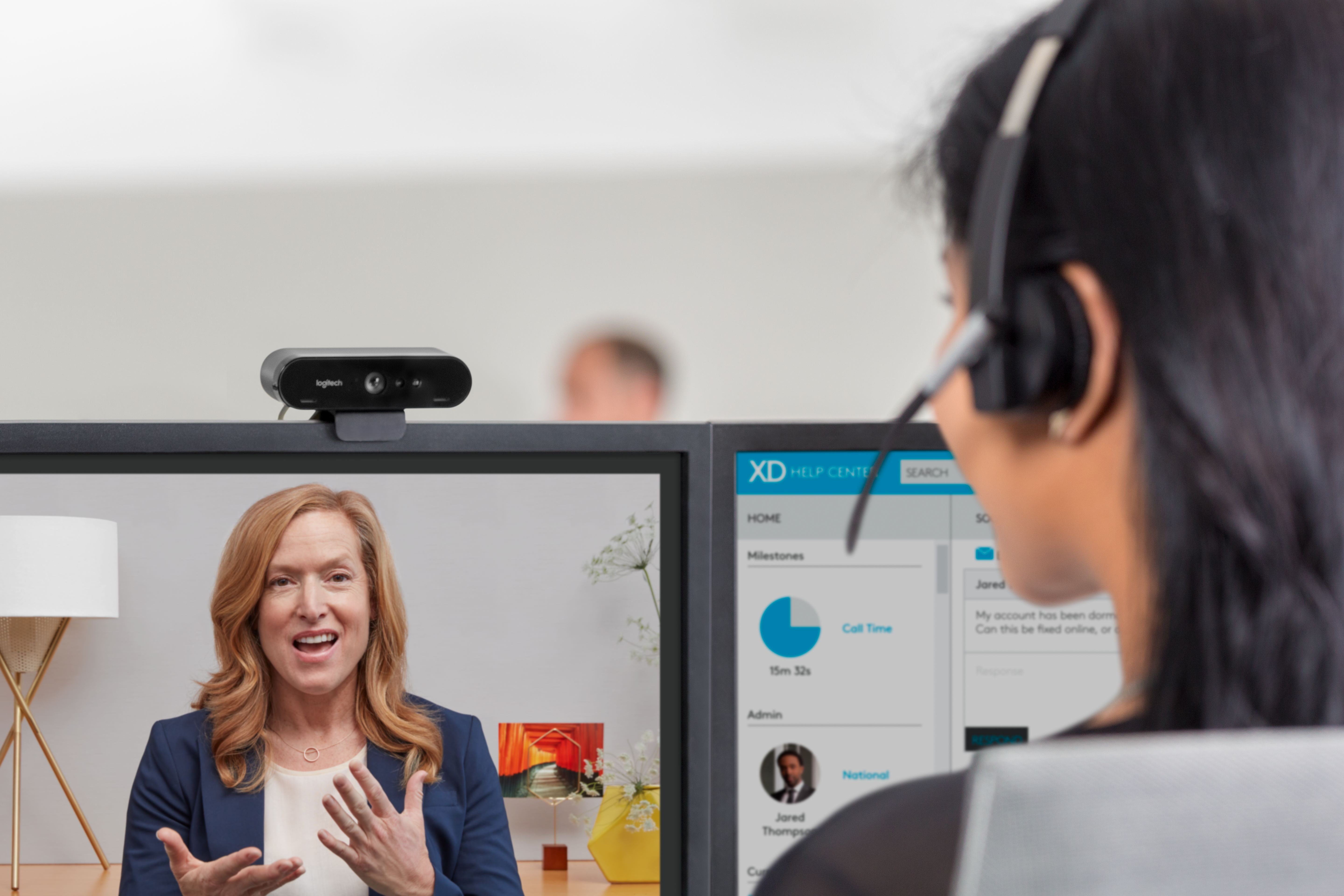
Top tips for video conferencing success
Body language makes up 70 percent of our daily communication. This is the reason why more and more companies are using video conferencing. With video, participants can communicate understanding, obscurity, joy or frustration in a non-verbal way without interrupting.

For those who are not well acquainted with video meetings, they can still cause some frustration and uncertainty that could have been avoided, if they were more familiar with some common video conferencing best practices.
A few practical tips:
For some companies, video conferencing has become a vital part of daily meeting operations, while others are just becoming more acquainted with the technology. When the invitation is available, questions may arise regardless of whether you are the host or attendant. Here you will find some tips that will help you through the setup and optimization of the conversation:
- Remember that even if you are not ready, the video conference may already be in progress. It is not uncommon for video conferencing participants to set-up the meeting in advance to make simple preparations, such as checking the sound and the presentation you are about to share.
- Be clear about exactly when the meeting starts. Poor timing can be a nuisance to the other participants.
- If you are the host of a meeting, it may also be worth noting that you are responsible for all the participants attending the meeting and having their say. Therefore, it is good practice to clarify hand signals that allow participants to signal if they want to make a comment or input.
- Remember that all sounds are captured by the microphones, whether they are sounds from clearing your throat, opening a bag of crisps or typing on the keyboard. Also, be aware that sounds outside the room can be disturbing to others in the meeting. If these are sounds you can't do anything about, the mute button may be easy to keep in mind.
- Learn how to present in the meeting room. You may not want to share everything with everyone. At the same time, it may be okay to check if all participants are actually seeing your presentation before the discussion begins.
How to get a good visual
Whether you are in a video call from a meeting room, from your own PC or other devices, it is important to think about how meeting participants on the other side view you. When 70 percent of communication takes place through body language, it is important you remind yourself and train yourself in your non-verbal communication skills.
Things to keep in mind:
- Close curtains or slats if there are glass windows in the meeting room. Then you become the focus and not the environment around you. At the same time, this will also ensure that you get a uniform light level in the room.
- Set the camera so that you get a good angle of yourself. Use the self-view feature to see how you look, this can be done before the conversation starts so you are absolutely sure what you look like on camera before the other participants see you.
- Try to include your head and shoulders so that the image does not cut out a part of your neck or head.
- If you are in a conference room, make sure that all participants who are in the same room as you are in the picture.
- Find the right balance, if the image is too close, all small movements become very visible, on the other hand the image should not be zoomed too far out as this does not provide an ideal video experience.
- How to act in front of the camera is important to think about. Try to treat it the same as in any regular meeting. Also be aware that small habits are reinforced on screen such as nail biting, grimacing, sniffing, etc.
- Body language is extra important to think about in a video call. Be aware that both interest, lack of interest, ambiguity, disagreement and the like become very evident when the camera is aimed at you. Therefore, be conscious of your own body language at all times.
- Think about the light in the room, as it effects your visual, adjust light sources and blinds to create a steady visual.
The sound is absolutely crucial
Sound is crucial to a successful meeting. It can be annoying, but it is possible to attend a meeting without video or with poor picture quality. You can also participate without the opportunity to share screen, although it is not as effective. It is not possible to drop sound and noise can make the meeting experience bad for all parties.
Things to keep in mind:
- Remember to use the mute button when there is a lot of noise. All sounds are captured by the microphones, whether they are cups placed on the table or the use of a keyboard on the PC. Therefore, in a multi-participant conference, it is in line with best practice to press mute, while being aware of this and remember to turn it off when it is your turn to talk
- Speak clearly and in a volume that is easily picked up by the microphone.
- Do not place things in front of the microphone - this will cause poor sound quality.
- Interruptions become extra distracting in a video conference (just like a conference call). If you have something you want to say, it may be okay to give a signal to the meeting manager either by hand signals or via chat function in the meeting room.
- Where you participate in a video call from a PC or a personal video system, you are required to use a good headset to ensure a good audio experience for all parties. Certified headsets that are upgraded in line with application updates are essential. This is especially for safety, but also for functionality.








